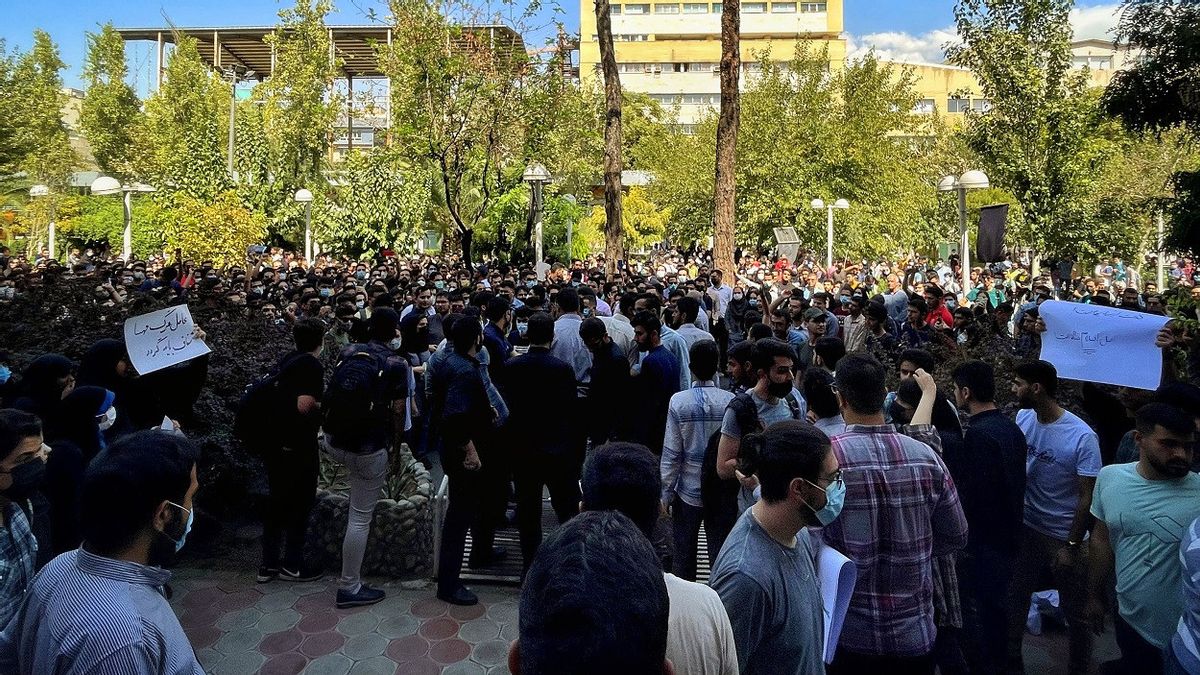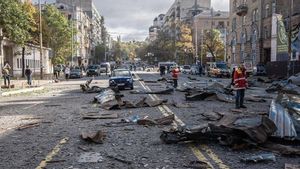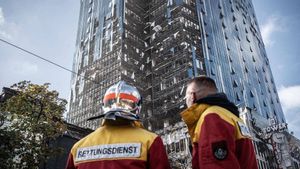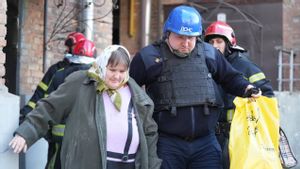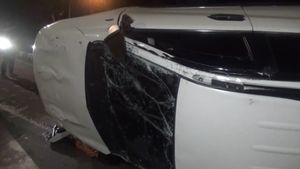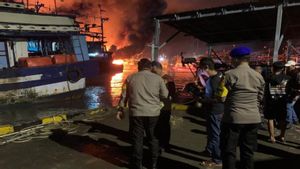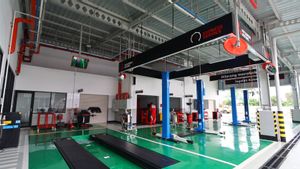JAKARTA - Iranian security forces intensified a crackdown on anti-government protests in several Kurdish cities on Monday, as demonstrations elsewhere in Iran spread to the vital energy sector.
Protests have plagued Iran since Mahsa Amini, 22, from the Kurdish region of Iran, died on September 16 while being detained for "inappropriate dress", marking one of the most daring challenges to Iran since the 1979 revolution.
Recent, unconfirmed reports on social media suggest workers at the Abadan and Kangan oil refineries and the Bushehr Petrochemical Project have joined forces. Iran's oil ministry commented on this.
The combination of mass protests and strikes by oil workers and Bazaar traders helped the clerics to power in the Iranian revolution four decades ago.
However, analysts say Iran's clerical rulers are likely to contain the unrest for now, with little prospect of the start of a new political order.
A video on Twitter showed dozens of workers blocking the road to the Bushehr petrochemical plant, in Assaluyeh on Iran's Gulf coast, chanting "Death to the Dictator", Reuters reported on Oct. 11.
Tensions are very high between the authorities and the Kurdish minority which rights groups say has long been suppressed, a charge Iran denies.
Human rights group Hengaw reported a large presence of armed security forces in the Kurdish towns of Sanandaj, Saqez, and Divandareh on Monday. It said at least five Kurds had been killed and more than 150 injured in the protests since Saturday.
Videos shared on social media showed protests in dozens of cities across Iran early Monday, with fierce clashes between protesters and riot police in towns in the Kurdistan native province of Amini. Posts on Iranian social media also called for mass protests on Wednesday.
Loud gunfire was heard in some of the videos shared on Twitter by 1500tasvir activists. A video shows multiple explosions creating blinding flashes in the Sanandaj neighborhood, the capital of Kurdistan province.
Undeterred by tear gas, batons and, in many cases, live ammunition used by security forces, rights groups say, protesters across Iran have persisted, with demonstrators burning photos of Supreme Leader Ayatollah Ali. Khamenei, calling for the downfall of the clerical establishment.
"Hey world, listen to me: I want a revolution. I want to live freely and I'm ready to die for it," said a 17-year-old protester in a central Iranian city, whose name and location could not be disclosed by Reuters due to security concerns.
"Instead of dying every minute under the suppression of this regime, I would rather die with their (security forces) bullet in protest for freedom," he continued.
VOIR éGALEMENT:
At least 185 people, including 19 minors, were killed, hundreds injured and thousands arrested by security forces, according to human rights groups. Blaming the protests on Iran's foreign foe, authorities say "rioters" have killed at least 20 members of the security forces.
Meanwhile, Iranian authorities have blamed the violence on a range of 'enemies', including Iranian Kurdish armed dissidents, with the Revolutionary Guards (IRGC) attacking their bases in neighboring Iraq several times during the latest unrest.
The English, Chinese, Japanese, Arabic, and French versions are automatically generated by the AI. So there may still be inaccuracies in translating, please always see Indonesian as our main language. (system supported by DigitalSiber.id)
